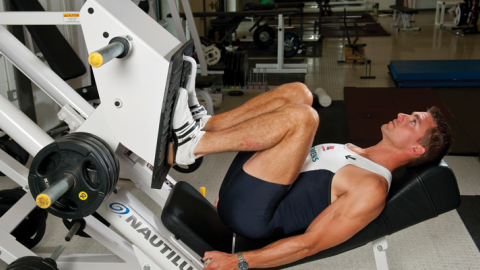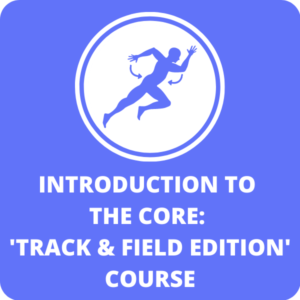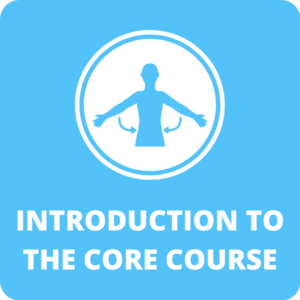
Incline leg press is often used as an alternative to squatting for a whole host of reasons – limited Range of Motion (ROM) during squatting, pain/discomfort during the squatting movement, lack of core strength, etc.
This exercise typically removes the need for the core to be strong/stable and places the total load on the legs/pelvis. Learn why it is that you can typically lift 2-3x as much weight in the Incline Leg Press than you can in the squat here.

Because the core has largely been removed from the exercise, we often see clients going heavy and deep with the movement in the hope of achieving their leg muscle size & strength goals.
A major downside to this large Range of Motion is that to achieve this goal, the client will most likely have to allow their butt/lower back to lift off the seat and allow the pelvis to rotate into a posterior tilt position which will in turn flatten/flex the lumbar spine (which should be anteriorly curved).
Check out this excellent animation of the incline leg press with a focus on pelvic positioning during the movement.
Why is my lower back sore?
There are two main issues with allowing the lumbar spine to adopt a flattened/flexed position during the Incline Leg Press:
1. The intervertebral disks are “squashed” by the vertebral bodies forcing them to protrude posteriorly leading to pressing/pinching of the nerve roots that run out from this section of your spine. This can cause significant discomfort/pain in your lower back.
2. In addition to the poor position of the lumbar spine in this deep position, adding load from the weight of the sled presses hard against your legs & spine further increasing the load on this lower region of your spine (which is now exposed because it is unable to maintain a neutral anterior curve).
Both these factors can quickly lead to lower back pain during and after performing a set of heavy Incline Leg Press.
How to minimise a sore lower back

There are several technical aspects that you should focus on at all times when performing this exercise:
1. Do not allow your lower back to come off the bench – by keeping your lower back/bum wedged into the L-shaped seat, you minimise the possibility of allowing your pelvis to lift off and move into this
excessive posterior rotated position.
2. Do not lower the sled as far down as you might like/want to – This will ensure you can still load your legs while keeping as much of your pelvis & lower spine out of the movement.
3. Ensure you correctly abdominally brace your core prior to each lowering repetition – this will keep the Intra-Abdominal Pressure (IAP) high further protecting your lower spine from inappropriate loading. If you are lifting very heavy, wearing a weight belt will assist in increasing your IAP during the movement.
4. Feet Placement – if you don’t feel you are generating enough load on your quadriceps – lower your feet position on the sled, this will increase the ROM through the knee joint (rather than through the hip joint) and will increase the tension through your quadricep muscles.
The Incline Leg Press exercise can be a great way of loading your legs if you are unable to squat or squat with much weight. If you concentrate on good technique as outlined above, you will maximise your returns and minimise hurting yourself which will affect future strength adaptations.





